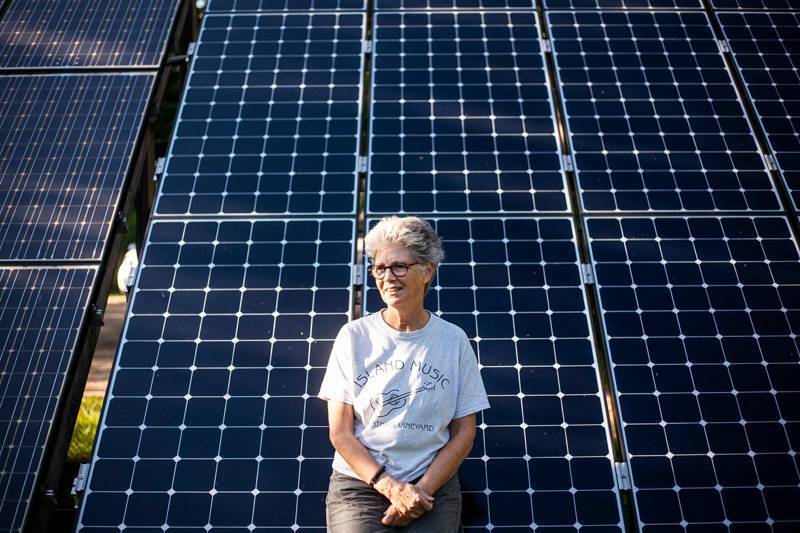She was an early advocate for solar energy on Martha’s Vineyard, but it failed to catch on. Now that climate change is more pressing than ever, she’s ready to share her vision with the next generation.
Kate Warner was at her high school graduation ceremony, just months shy of starting an environmental science track at Brown University, when her chemistry teacher pulled her aside and asked her to rethink the decision. It wasn’t that she didn’t have the grades. “You’re one of my best students,” Warner remembers the teacher saying, “but if I pour two liquids together, what a science student should say is, ‘What reaction is taking place?’ What you say, Kate, is, ‘What a pretty color!’”
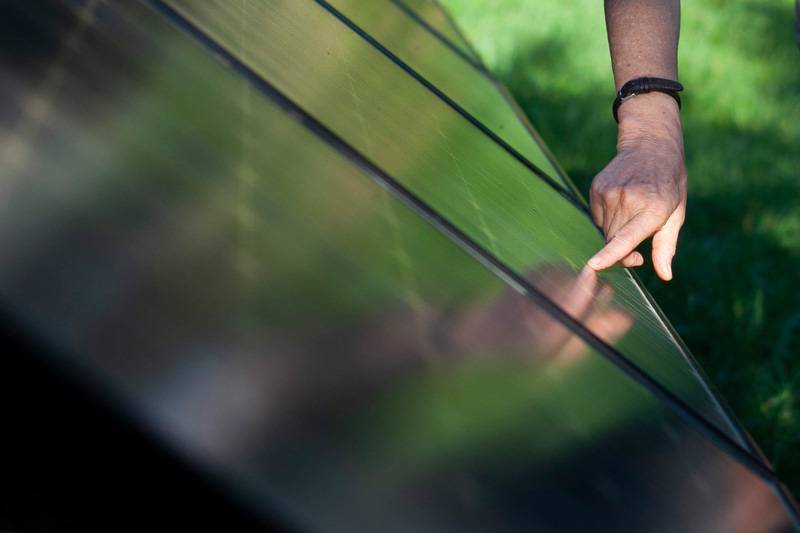
Warner’s mathematical mind and her creative bent have long been in competition with one another, but she never saw any reason she couldn’t embrace both. She’s a self-described “overlapper” when it comes to careers and technologies, but there’s always been one constant: Warner has been speaking out against climate change since the early ’90s, specifically as an advocate for solar energy on-Island. It wasn’t until fairly recently that the Island was willing to listen.
It turned out that Warner’s chemistry teacher was right. She dropped out of her environmental science program and pursued a degree in textiles from Rhode Island School of Design, then a degree in architecture from Columbia University. After working in the shadow of the New York skyline for a spell, she accepted an offer to work for a residential architect on Martha’s Vineyard, where she’d long spent summers.
Warner soon started working as an independent architect, but her schooling in environmental science weighed on her conscience. “I fell into a deep depression,” she said. “I felt like I hadn’t made the impact on the world I wanted to make.” She read Al Gore’s Earth in the Balance, and after learning how electricity use and transportation contribute to climate change, began seeking ways to integrate sustainability into her architecture work.
The first experiment was ReCraft East, a demonstration house Warner constructed in Oak Bluffs, using recycled and sustainably sourced materials. It was inspired by Steve Loken’s ReCraft 90, a similar demonstration home in Missoula, Mont.
The second experiment involved changes to Warner’s own home, which she built in 1996. She installed the first grid-tied solar electricity system on Martha’s Vineyard, and began exploring early options for electric cars.
The third experiment did not go over quite so well. Warner insisted that all of her architecture clients install solar arrays (on what was often their second or third home). Warner, in exchange, would offer her services at a discount. The follow-through rate for clients was poor. “That turned out to be a mess,” Warner said, “and it pretty much ruined my architecture career.”
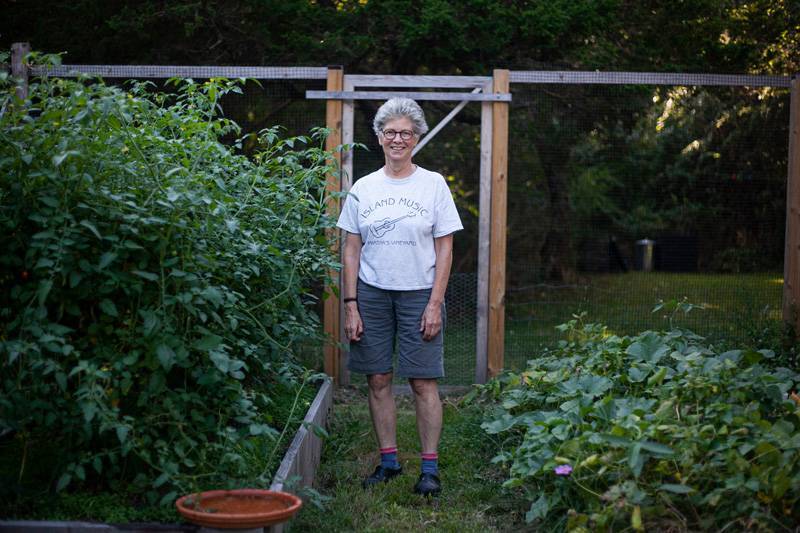
So Warner flung herself into a variety of other solar energy projects on the Island. She founded a business called Under the Sun, which would eventually evolve into initiatives like the Vineyard Energy Project and Vineyard Power. The group offered workshops for architects, plumbers, electricians, homeowners, and even schoolchildren to learn about energy efficiency. Warner also helped facilitate the Island’s adoption of the Million Solar Roofs project, a series of grants from the U.S. Department of Energy that led to the first 100 solar arrays on Martha’s Vineyard. Warner earned the “best solar progress” award for the initiative. Thanks in part to those arrays, 7.7 percent of electricity on Martha’s Vineyard is now generated by solar.
Warner also orchestrated several solar demonstration sites around the Island — displays that still exist at Cronig’s, the Chilmark Community Center, the Aquinnah Cliffs, and the West Tisbury School, among other locations. Warner said she encountered a lot of mistrust surrounding solar, largely based on solar hot water systems that were improperly installed, poorly maintained, and ill-functioning. “When solar electric came along, people said, Solar doesn’t work,” Warner said. “I was trying to get past those preconceptions.”
Warner was met with some interest, but even more resistance. “I did all this work, but I was a little bit before my time,” Warner said. “I was seen as a leader, but I was too intense. People did not want to connect with me. I was really leading this thing as part of a lone crusade, and I got burnt out. It was very lonely.”
It would be nearly 10 years before Warner was publicly involved again in “anything to do with energy.” She focused her efforts on improving the energy efficiency of her own home and transportation. She also founded the Vineyard Bread Project, a weekly, community-supported bread program. Warner’s electric ovens are powered by her backyard solar arrays, and she finds the baking process to be a great use of her creative sensibilities as well as her mathematical skills: “It’s very precise; everything is weighed and done in a certain time frame,” Warner said. “On Wednesdays, my brain has to put everything else aside and start weighing out the flour, and on Thursdays, all I can do is bake bread. It’s actually very meditative, a kind of zen to keep my mental state under control. I think it’s good for me.”
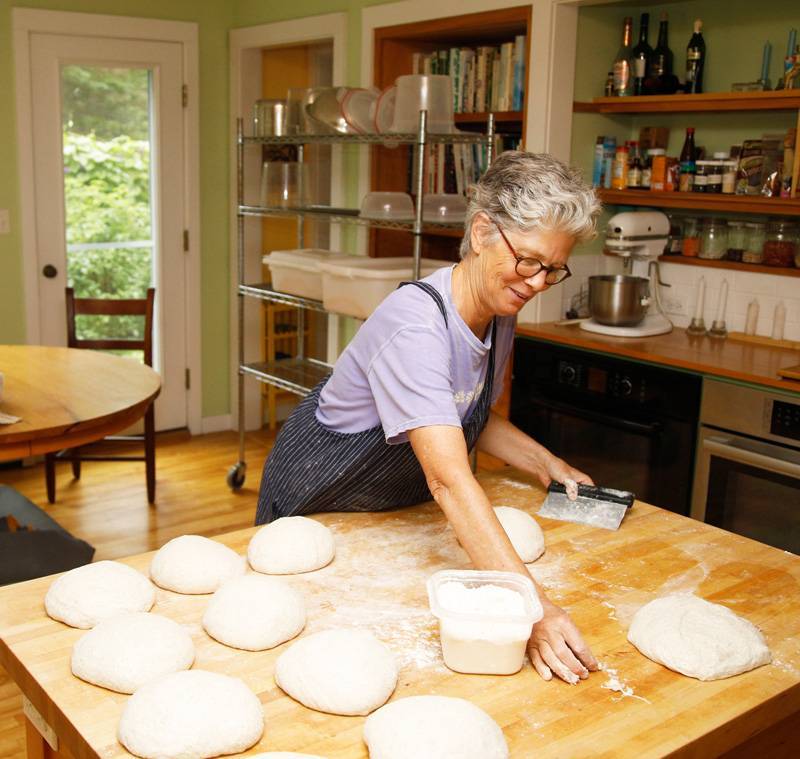
A few years back, on a whim, Warner attended a talk about climate change on the Island. “And now I’m back to my old tricks,” she said. She joined the nascent Island Climate Action Network. She chairs the West Tisbury energy committee and climate advisory committee. She serves on the M.V. Climate Action Task Force. In addition to helping her town lessen its climate impact and mitigate potential climate change impacts, Warner is involved in an effort to get local energy supplier Eversource to build up the Island’s renewable energy infrastructure.
The only difference is that this time around, Islanders are ready — not only to listen, but to do their part. “In those 10 years, younger people came along; climate change started to appear in the paper with greater regularity,” Warner said. “There are now tons of people involved in climate stuff. I can get feedback on what I do, and work with other like-minded people.”
Those people are equally excited to work with a pioneer like Warner. “Kate’s experience as one of the first advocates for renewable energy on the Vineyard was invaluable in the early work. Now she is a vital member of a strong team of Island volunteers moving us toward an all-electric future,” said Ben Robinson, chair of the Island Climate Action Network. “But more than that, I have personally valued her clarity, advice, and friendship on tackling the immense challenges of climate change.”
Not to say there aren’t moments of doubt in the face of an issue as ominous as climate change, but Warner tries to enjoy the little things. Or at least the moments where the little things overlap with the big issues. The warming scent of fresh cinnamon raisin bread. The taste of fresh-grown beans from her garden. Her electricity meter steadily spinning backward, thanks to her solar arrays.
Warner’s friends joke that her mood is directly attributable to how many kilowatt-hours she is generating. She doesn’t dispute that, she just shrugs. “Everybody is happier when the sun is shining,” she laughs.
A Tour of Kate Warner’s Solar Home
Warner’s own home is a modest abode approaching 25 years old. She modeled the 1,200-square-foot home after her ReCraft East experiment, and has been steadfastly updating her utilities as more efficient energy technologies emerge.
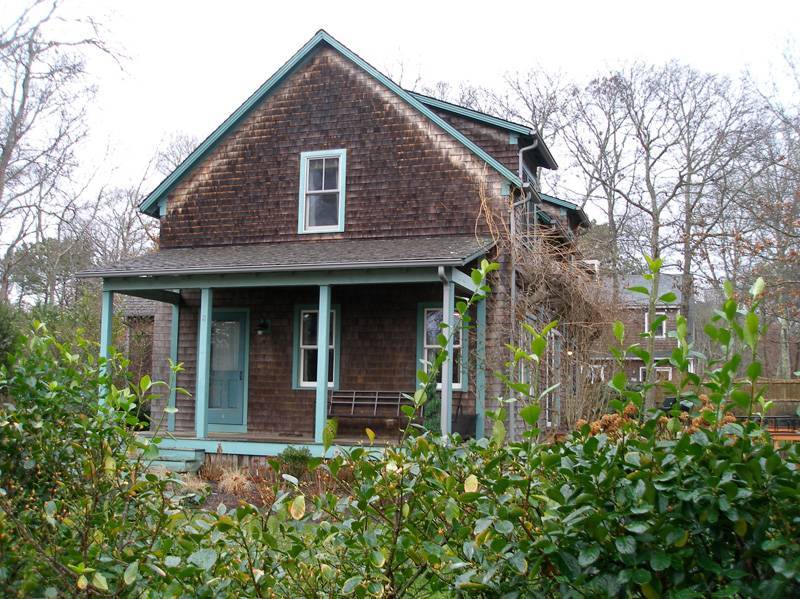
The first foray into solar was the hot water heater on Warner’s roof, which feeds a tank in the basement. In the winter, that heater boosts water from about 50° to anywhere between 80 and 100°s. In the summer, the temperatures reach closer to 150°. Warner is able to turn her hot water heater off altogether between May and October. When she does use the hot water heater, it’s powered by an efficient heat pump that intakes air from the basement. That heat pump also works as a dehumidifier, which is great for combating mold and mildew in the humid Vineyard summers.
Warner added a solar array (in the form of a backyard panel) about a year after she moved in. She’s since expanded the array to about five kilowatts. This supplies all of the power for her property, and charges her electric car. The sun shines on the panels to produce a direct current. That direct current runs into the basement, where inverters change it into alternating current. If any of the appliances from Warner’s home call for power at that moment, the power is used immediately. If not, the power returns to the grid, and Warner is issued a credit. Warner typically generates a surplus of power between March and November, then uses her credit toward the winter electric bills.
When Warner first built her home, the propane-fired baseboard system she installed was considered one of the most efficient heat sources on the market. While that system is still in place to add an extra off-season boost, Warner has since upgraded to a heat pump. The heat pump can create warm or cool air, then distribute that air through a mini-split in her living room.
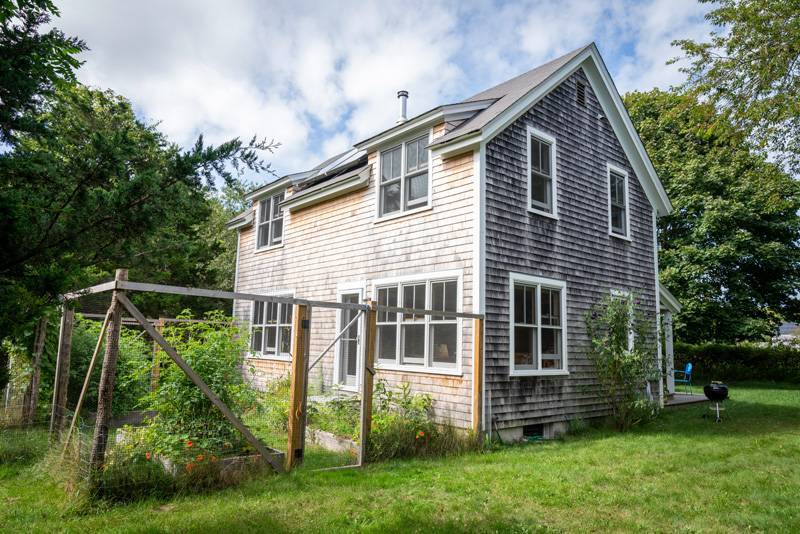
Warner also leased an electric car, a Smart Car, for about $150 a month. The model has since been discontinued, so Warner is searching for a replacement. She recently test-drove a Tesla in the automatic steering mode. “It scared the shit out of me,” she said. Warner does most of her driving on-Island, so she doesn’t need a lot of range, but she notes it’s nice to have a vehicle with enough clearance to take on the Quansoo road.
There are many ways to implement these new technologies, Warner stresses. In some cases, you don’t have to give up your existing car, your hot showers, or your beloved fireplace. “Anybody can do this; there are lots of ways to get into this arena without jumping off into a place where you don’t feel comfortable,” Warner said. “The important thing is to get going.”
See more of Kate Warner’s sustainability tips in Kate Warner’s Nine Year Plan.

